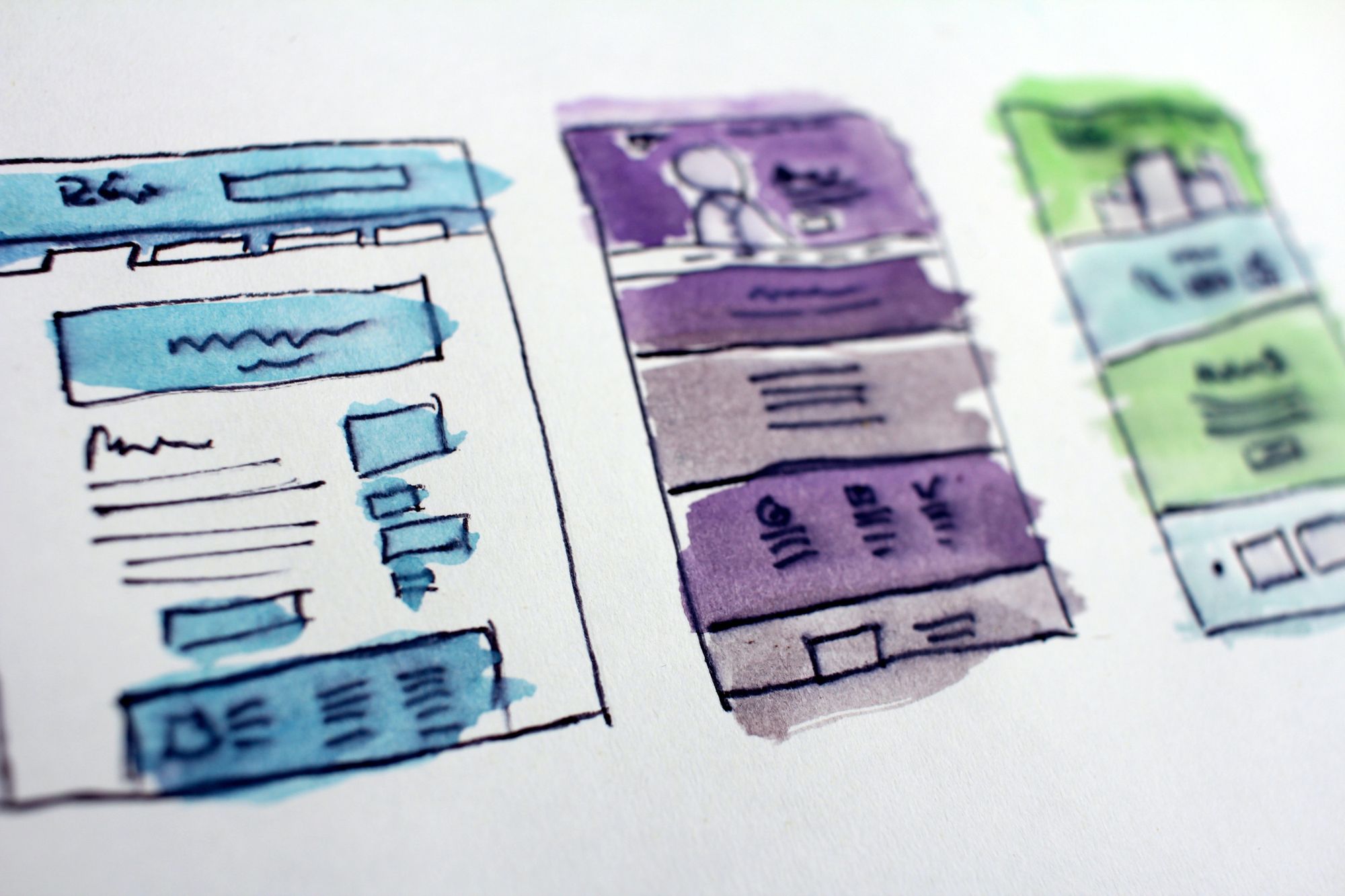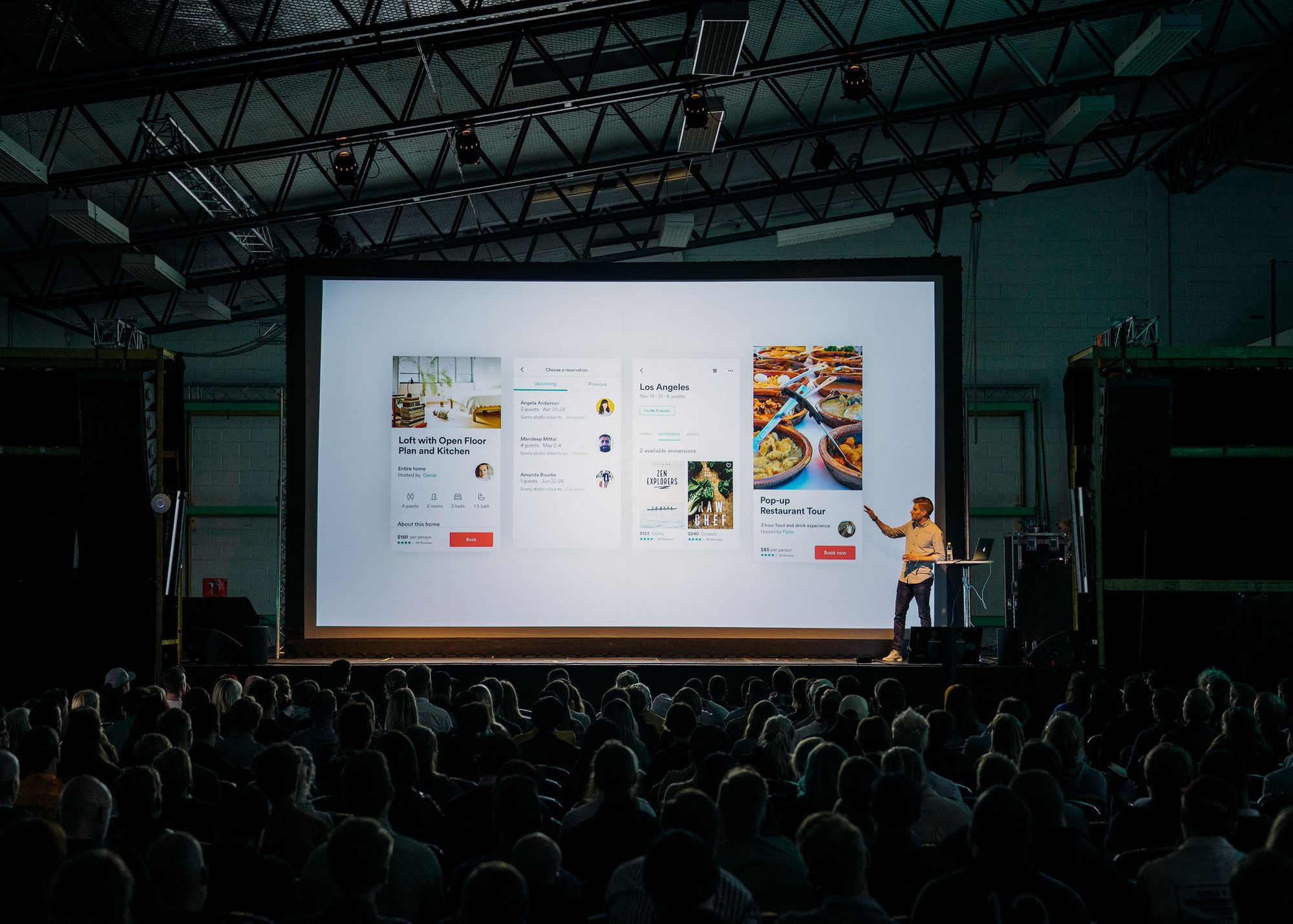What is a case study in marketing?
A case study is a testimonial outlining your customers’ success with using your product, explaining how your product’s key features led to benefits for your customer such as productivity and through increases and time and cost savings.
Case studies often serve as your products’ calling card, highlighting how a customer successfully used your product.
What is the purpose of a case study?
Case studies in marketing are used as social proof. This gives buyers more context to understand if they are making a good choice. Showing case studies to customers who are on the fence about your product could convince them to make a purchase.
What is the difference between a case study and a customer story?
A case study is a more in depth look at the customer’s thoughts and results from your product than a customer story.
The customer story paints a picture of the problem, solution and results. A case study will include all of this information plus a more detailed explanation of how the solution was delivered and the key measurements that show the product's effects.
What makes a good case study?
A good case study can usually be broken down into the following elements:
- Challenge: Your customers’ challenges before using your product
- Solution: How your product solves these challenges
- Benefits: Key performance indicators highlighting the benefits your customer received from using your products. KPIs include:
- % increased productivity
- X in cost-savings
- Y amount of time saved doing Z task
- B times increase in throughput
- Products used: Which of your products did your customers use to experience this success? Which features benefited them the most?
What should a case study include?
Case study formats
Case studies usually come in a variety of formats such as written documents, third-party reviews either on your product page or a third-party site, videos, or even a customer presentation on your product at a live event.
Here’s the breakdown of each type of case study:
White papers

Case study white papers are usually written documents that provide a full overview of how your customers succeeded with your products.
These documents usually detail everything from your customers’ decision to use your products versus the competition, their implementation, their day-to-day, and key performance indicators.
Usually, case study white papers are great for your sales team to use as leave-behind collateral.
Videos

A video case study is a great way to highlight your customers using your product in addition to discussing their success with your product.
Typically, the best videos blend an organic customer interview with shots of your customers using your products in their environment. The best length to target for these is about 3 to 5 minutes at most.
Third-party websites

Third-party sites such as G2 Crowd and TrustRadius are also great sources for customer testimonials. Customers tend to be candid on these sites and, in addition to getting great customer quotes which you can repurpose on your website, you can also get valuable product feature requests and ideas, or information on what’s not working so well with your product.
Presentations at live events

Customer presentations highlighting your products and your customers’ success with your products also case studies.
If your customer is willing to go on stage at your event or a relevant industry event and discuss how they’ve used your products and how they’ve been helpful, that’s probably one of the best testimonials you can get, especially with other prospects in the room. Your customers become instant lead magnets and can attract new users to your company through their presentation.
To help your customers be successful with advocating for your products, arm them with tools that they can leverage if they need or offer to support them during their presentations!
Customer advocates

The same customers who are willing to go on stage and present about your products on your behalf are also great customer advocates for your Sales team to use to help your company sell your products.
As part of the sales process, you can provide your salespeople with a list of customers who are willing to connect with curious prospects. Hearing an opinion for an existing customer can help convert a prospect to a customer.
Adam Thomas, PM expert, shares some case study formats:
Testimonials
"When talking to your customer doing the case study, they may say a bite-sized anecdote that sums up a feature or your product in a helpful way. These are great to use on a sales page or product page, as it gives your product more credibility."
Articles
"Your blog, if you have one, can highlight users. Writing an article or using the case study conversation as a post can help customers see, in a more relaxed context, how your product works for them."
How to build a library of customer case studies
Poornima Mohandas, Director of Product Marketing at Birdeye, shared her advice for building a library of case studies.
"First things first, before you start cranking out case studies, find out what your salespeople really want. Are they after desirable logos from select verticals? Start with a long list of happy customers and narrow it down with appropriate filters such as length of customer relationship."
Talk to sales, map the need
"Talk to your sales leaders and a handful of sales folks across enterprise and SMB teams to figure out their needs. Ask them:
- Will customer case studies be valuable to you?
- Ideally, which brands would you like case studies on?
- What verticals, geographies, size of companies are you most interested in?
"These answers coupled with the strategic direction of the company will map out your targeting strategy."

Prepare a long list with customer success
"Consult with your customer success team to get a list of happy customers. Forward-looking customer success teams will have colour-coded and complete lists, just waiting for you to run with it!
"This is your long list. Now go ahead and trim it down to:
- Recognisable logos
- Target verticals, geographies, and company size
- Customers who have been with you for > a year
"If your list still has over a 100 names, narrow it down to customers who have been with you for five years. That is a lifetime in the SaaS business and it will speak volumes to what a great partner you make. And just like that, you have your shortlist of case study candidates."
Reuse conference sessions
"On the other hand, if you don’t have the time to shortlist customers and interview them, a shortcut is to tap into your company’s user conference recordings. If you have recordings of customers sharing their stories in a breakout session, simply transcribe it and repurpose it as a customer case study."
Tips for startups to get case studies
"Startups often struggle to find willing customers, some of them even offer discounted product prices as an incentive. I don’t recommend that as it dilutes your value.
"If you find that you don’t have many happy customers, then your problems may be more fundamental like a product-market misfit. Now, that’s a totally different beast for another blog post.
"Here are some tips you can try to get more case studies, faster:
"Offer a sales incentive – Involve your sales folks to solicit case studies, after all, they own the relationship. If budget permits, announce a spot bonus for every sales person who brings in a case study, I have seen this work wonders. Share the shortlist of case study candidates and ask sales to check in on the customer’s willingness to do an external-facing case study.
"Use the circumstance to your advantage – Under the current economic climate, your customers are most likely delaying payments. Now is as good a time as any to ask for something you want — a case study.
"Look for the right moment – Always be on the lookout for the right moment. Perhaps, it’s after a Customer Advisory Board session or after the customer has significantly broadened product usage. When the customer is mighty pleased with you, pop the case study question.
"Look for ambitious champions who like publicity– Look for outspoken, ambitious customer champions who want to be seen as driving change. So you may ask, how will I find them? Typically, they will be seen speaking at industry events and will in all likelihood be active on LinkedIn. If such champions benefit immensely from your product, they will more likely than not want to share their story. Your case study should capture the transformation they have been able to bring about in their organization. Make the customer the hero in your case study rather than your product."

Do the leg work
"Reach out to five companies to get one to convert. So if you are aiming for a modest library of 10 case studies, reach out to at least 50 customers.
"At the outset, take permission for a public-facing, named case study. Recently, I wasted about 60 minutes doing research and interviewing the HR manager of a large retail brand only to receive a frantic phone call 30 minutes later saying, “Please don’t publish anything I said. I got a call from my boss saying that we cannot do case studies with vendors.”
"Simultaneously, work with your demand gen team to work out a promotion plan for each of your case studies. Here are some easy-to-implement ideas:
- Write a customer-focused blog post
- Post the case study both as an HTML page as well as a PDF
- Create a banner on your customer webpage featuring the latest case study
- Send an email to your prospects featuring the latest case study
- And of course, broadcast on social media"
How to get the full customer story
"Say you have a customer interview scheduled, as a product marketer, be sure to attend the interview even if you have a content writer to write up the case study. You will be able to probe much deeper and uncover a story that syncs with your positioning. Plus, you will learn yet another valuable customer story that can come handy in your next customer demo or analyst presentation.
"In the interview:
- Let the customer talk and don’t interrupt
- Ask open-ended questions
- Ask for anecdotes, examples, and all relevant details
- Probe deeper for quantitative benefits
- Gather more information that you need
"Find out which departments use and benefit from your product. Interview people across departments and hierarchies so you get the full perspective. Get a benefit-oriented quote from the senior most buyer persona.
"For instance, if you sell to the operations team, interview the director of operations, an operations manager, and a warehouse manager, then get a quote from the COO."
Once the customer story is ready
"Share the final version of the case study with the customer for review. Be ready to accommodate some edits. Once approvals are in, design, execute on the promotion plan and press publish.
"Send your customer a thank you note, try the snail mail variety on your company letterhead, also be sure to thank them on social media.
"Rinse and repeat to build up your library of case studies."

Adam Thomas, PM expert, also shares some tips for building a a case study library:
Open-ended questions
"Your question set should be short - no more than five questions. Make sure that there is no way someone can give a one-word answer - these questions need to be open-ended. You want to have a conversation, one that is free-flowing and that means focusing on the customer and the environment."
Analyze carefully
"Make sure you sit with these conversations for a while. Take the time to get good quotes that are interesting and align with your values. Check to see if the language on your marketing materials match how your customers talk. All of your customers belong to some sort of “world” everything that comes from this.
"It may seem simple from what we’re discussing, however, as you start to put this plan into action, you’ll see how much data you’ll collect, and how closely you can match the mental model of your customers."
Product Marketing case study examples
Companies often use case studies on their website to demonstrate how their products have helped a previous customer. Here is a selection of some of the examples out there:
Drift
Boston-based company Drift specializes in helping their customers generate qualified leads, using chatbots and conversations within their website.
When software company Zenefits encountered huge marketing growth, the large amount of traffic being diverted to the company’s website resulted in problems such as inefficiencies in the SDR channel, lack of buyer centricity, and prospective customers slipping through the net.
Drift provided a solution for the Zenefits, by introducing buyer-centric conversations, as well as time-saving automation. The company not only optimized the SDR channel, but put contingencies in place to provide Zenefits’ customers with access to around the clock support.
As a result, the customer experience improved, the win-rate increased, while the overall efficiency of the SDR channel was improved, and Drift did a great example of bringing all this fore with their case study page by:
Pulling out key stats:
Including clear quotes from satisfied customers:
HubSpot
Japanese consumer electronics and commercial electronics manufacturing giants Casio needed to find a way to enhance the efficiency and effectiveness of inbound marketing efforts at the organization, as well as the communication between sales and marketing, to protect coveted leads.
In search of a solution, Casio turned to the HubSpot growth stack, which combines Marketing, CRM, and Sales software to support its clientele.
The decision to invest their faith in HubSpot has paid dividends, as highlighted on the case study page on the HubSpot site.
Performance statistics:
Like Drift, HubSpot have structured their case study in a way which draws the focus to the impressive results Casio has achieved since they received their support.
SolidWorks
SolidWorks is a solid modeling computer-aided design and computer-aided engineering computer program.
The company was tasked with taking the development of humanoid robotics to a new level, with the design and creation of engaging, fun, and non-intimidating robots.
As part of the solution, the company combined several features, including SOLIDWORKS Premium design, SOLIDWORKS Simulation Premium analysis, SOLIDWORKS Plastics injection molding analysis, and SOLIDWORKS Enterprise PDM product data management software.
This helped form robots with human-like traits and movements - a significant development in treatment for people living with autism, with the case study page highlighting successes by including the likes of:
Positive quotes from key stakeholders:
Where to find your case studies
The best way to find a good case study is by asking your Sales, Customer Success, Support, and/or Product teams to source vocal, happy users.
Case study customers are usually the ones that are happy with your products, constantly jumping at the opportunity to advocate for your products to their friends and colleagues, and ones who are willing to jump on the phone and be a sounding board for your team.
Typically, these users provide a 4 or 5-star rating on third-party platforms like G2 Crowd, TrustRadius, Apple App Store, etc.
The best way to find these folks is to keep your ears to the ground by monitoring third-party review sites, listen closely to when your product managers or customer success folks rave about a particular customer, and look out for the users who are chomping at the bit to talk about you.
You can also use Google alerts to source instances when your product name comes up online, you may find that a blogger online is a good testimonial customer.
Social media can also be a great resource for prospective case study candidates, especially if you’re finding that specific followers jump at the opportunity to share a screenshot of what they’re doing in your products or offer advice to other followers.
Tips for startups to get case studies
When you’ve found a great case study candidate for a video or a live presentation, you want to get a story from them as quickly as possible. However, some candidates and companies may be camera shy or may hesitate to go on record with their testimonial.
Use the circumstance to your advantage
One way to sway your prospects is by presenting a case study as an opportunity for your customers to showcase themselves as leading industry heroes for taking a fateful leap and using your products.
Look for ambitious champions who like publicity
Case studies are also a great way to highlight the interviewee and provide them with an opportunity to build their resume by saying they were featured in a case study.
Look for the right moment
Case studies can be a great source for product feature requests, customer feedback, and enhancement requests. When you interview your customers for a story, pay close attention to any side remarks they may make, some of these could potentially serve as good feedback for your product teams.
You can also sprinkle in some customer research questions as well throughout the interview to surface some of that juicy feedback.

Offer a sales incentive
Additionally, you can offer to link back to their company site to provide them some SEO juice. Or, better yet, a coffee or a $25 gift card in return for a case study tends to go a long way!
Example questions
Which problems were you looking to solve when you went out searching for our product?
- What made you choose our product over other solutions? What other solutions were you considering?
- What is your favorite part about using our product?
- What was your experience implementing our product?
- Which benefits have you seen from implementing our product? Any time-savings, productivity gains, etc?
- What are you able to do with our product that you weren’t able to do before?
Want to boost your leadership skills? Our Developer Marketing Leaders: Fellowship provides a space for discussion in real time, offers templates and frameworks, allows you to learn from industry leaders and network with your peers, and so much more.






